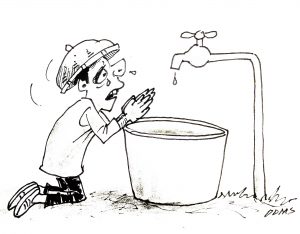The Philippine Atmospheric, Geophysical, and Astronomical Services Administration (PAG-ASA) has predicted a drought to hit the nation in 2024. It is crucial for policymakers and communities to proactively prepare for this impending natural phenomenon, considering its potentially devastating impact on agriculture, water resources, and overall socio-economic stability.
Recognizing the gravity of PAG-ASA’s forecasted drought, governmental bodies and policymakers need to adopt a multi-faceted approach to mitigate its potential consequences. With agriculture being one of the most vulnerable sectors during droughts, investments in drought-resistant crop varieties, improved irrigation systems, and the implementation of water management policies become paramount. Moreover, collaboration between research institutions and governmental agencies should be fostered to develop advanced technologies and drought monitoring systems that can provide accurate and timely information to farmers, enabling them to make informed decisions on crop selection, planting schedules, and resource allocation.
Local communities should be empowered through educational campaigns and capacity-building programs to encourage proactive measures in response to the predicted drought. Awareness programs can educate the public about water conservation practices, reforestation initiatives, and the use of sustainable farming techniques such as rainwater harvesting and precision agriculture. Additionally, local governments should establish emergency response plans that prioritize vulnerable communities, ensuring equitable access to water, healthcare, and social aid during the drought period. By involving the community in the planning process, social cohesion can be fostered, and the impact of the drought can be minimized through collective efforts.
While preparing for the 2024 drought, it is essential to address issues of long-term water resource management. Increased investment in the development of water infrastructure, construction of rainwater storage systems, and efficiency-improving measures in water supply networks will not only help tackle the predicted drought but also build resilience against future water scarcity. Furthermore, the promotion of research and innovation in sustainable practices such as greywater recycling, desalination, and water-efficient technologies must be embraced to optimize water usage and reduce overall dependence on scarce water resources. These efforts will play a crucial role in ensuring water security in the face of the predicted drought and pave the way for a more sustainable and resilient future.




